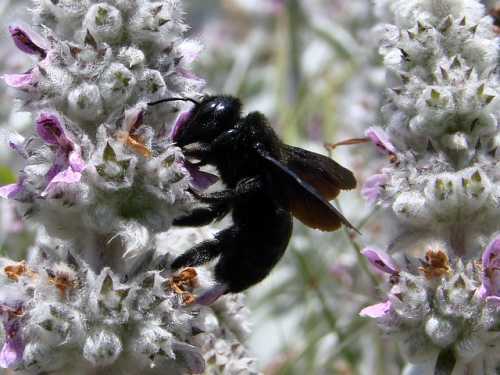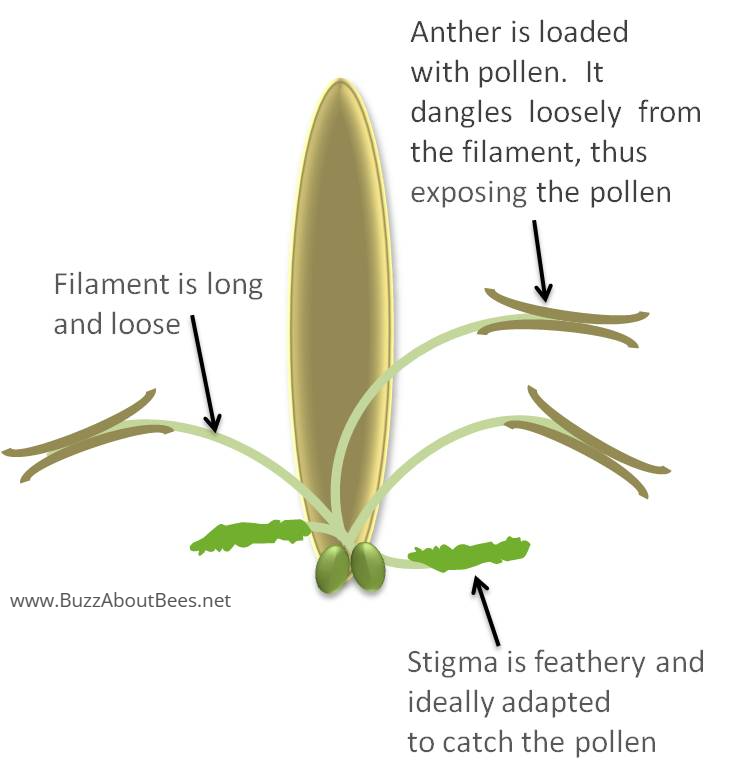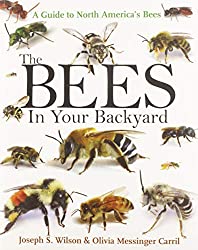Carpenter Bees And Buzz Pollination
Buzz pollination occurs when bees use sonification (vibration) to release pollen from flower anthers. Some flowers, including those of certain food crops, may be poricidal, meaning that without sonification, they do not give up their pollen reward easily. Unless there are bees present and capable of sonification, pollination of such plants may be challenging or less efficient, with knock-on effects for yield.
Through their use of sonification, large carpenter bee species (Xylocopa) have been found to be highly effective, pollinators of a range of flowers and crops. Their value and impact has also been assessed in commercial growing situations, such as glass houses.
Carpenter Bees And Buzz Pollination
 Xylocopa are large species!
Xylocopa are large species!Xylocopa are large bees, and it is proposed that large-sized bees, are in general, recognized as effective pollinators of poricidal flowers for 3 main reasons1:
- they touch the stigma while buzzing flowers,
- they remove more pollen per visit, and
- they intensely fly among plants of the same species.
However, small bees may compensate for their size, by spending a longer time period at each flower, hence extracting more pollen2.
Carpenter bees are warm-weather foragers, and tolerate high ambient temperatures during foraging. Most species are inactive at low temperatures3. For example, citing several published works, Keasar (2010)3 states the lower activity temperature thresholds are:
- 23∘C for Xylocopa capitata,
- 21∘C for Xylocopa sulcatipes,
- and 18∘C for Xylocopa pubescens.
Are large carpenter bees effective pollinators?
Carpenter bees are able to buzz pollinate, and are recognized as effective pollinators of a variety of flowers, as well as a number of food crops, for example:
- Yellow passionfruit is grown commercially and is pollinated by the indigenous bee, Xylocopa mordax (Antillean carpenter bee) in the West Indies4.
- The green carpenter bee, Xylocopa lestis has been successfully reared in greenhouses for tomato pollination in Australia. Thanks to the ability of the species to buzz pollinate, tomato weight was observed to increase by 10% relative to a combination of wind and insect pollination5.
- In Israel, Xylocopa pubescens (pubescent carpenter bee) was assessed as a pollinator of greenhouse-grown honeydew melons, in comparison to honey bees.
Although visit durations per flower were shorter for Xylocopa pubescens than for honeybees, pollination by both bees resulted in similar fruit mass and seed numbers, but Xylocopa pubescens pollination increased fruit set threefold as compared to honey bee pollination6.
Nectar robbery may impair pollination
However, carpenter bees may also engage in nectar robbing, during which the food reward is taken without pollinating the flower.
Nectar robbing has been reported for Xylocopa virginica (Eastern carpenter bee) and Xylocopa micans (Southern carpenter bee) foraging on blueberries.
Nectar robbing in blueberries may reach 100% of the visits, and significantly reduces fruit set and seed number as compared with plants visited by honey bees3.
However, the impact of nectar robbing is not always clear. For example, according to Sampson et al (2004), nectar robbing by Xylocopa virginica and the Western honey bee, Apis mellifera contributes to pollination of rabbiteye blueberry7.
 Eastern carpenter bee Xylocopa virginica
Eastern carpenter bee Xylocopa virginicaAre large carpenter bees useful for commercial pollination?
Whilst some trials have managed to house large carpenter bees in nest boxes inside glass houses, one of the major challenges is the rearing of sufficient number of bees to make it possible to rear carpenter bees for use in commercial pollination. Keasar (2010) notes that "efforts to develop protocols for captive mating and rearing of carpenter bees have so far met with limited success"3.
Nevertheless, where flowers and food crops are grown out in open fields and gardens, carpenter bees are no doubt able to assist with pollination.
References
1. Mesquita-Neto, JN, Blüthgen, N, Schlindwein, C. Flowers with poricidal anthers and their complex interaction networks—Disentangling legitimate pollinators and illegitimate visitors. Funct Ecol. 2018; 32: 2321– 2332. https://doi.org/10.1111/1365-2435.13204.
2. Tayal, M.; Kariyat, R. Examining the Role of Buzzing Time and Acoustics on Pollen Extraction of Solanum elaeagnifolium. Plants 2021, 10, 2592. https://doi.org/10.3390/ plants10122592.
3. Tamar Keasar, "Large Carpenter Bees as Agricultural Pollinators", Psyche: A Journal of Entomology, vol. 2010, Article ID 927463, 7 pages, 2010. https://doi.org/10.1155/2010/927463
4. Corbet, S., & Willmer, P. (1980). Pollination of the yellow passionfruit: Nectar, pollen and carpenter bees. The Journal of Agricultural Science, 95(3), 655-666. doi:10.1017/S0021859600088055.
5. K. Hogendoorn, Z. Steen, and M. P. Schwarz, “Native Australian carpenter bees as a potential alternative to introducing bumble bees for tomato pollination in greenhouses,” Journal of Apicultural Research, vol. 39, no. 1-2, pp. 67–74, 2000.
6. A. Sadeh, A. Shmida, and T. Keasar, “The carpenter bee Xylocopa pubescens as an agricultural pollinator in greenhouses,” Apidologie, vol. 38, no. 6, pp. 508–517, 2007.
7. B. J. Sampson, R. G. Danka, and S. J. Stringer, “Nectar robbery by bees Xylocopa virginica and Apis mellifera contributes to the pollination of rabbiteye blueberry,” Journal of Economic Entomology, vol. 97, no. 3, pp. 735–740, 2004.

